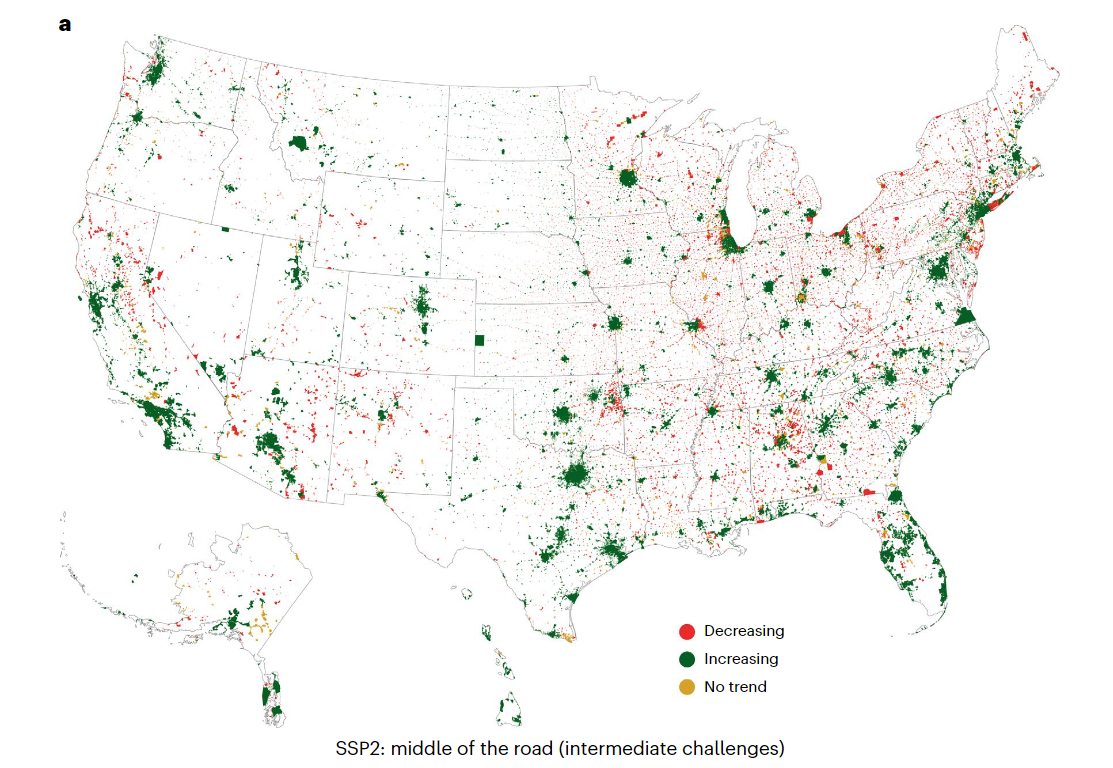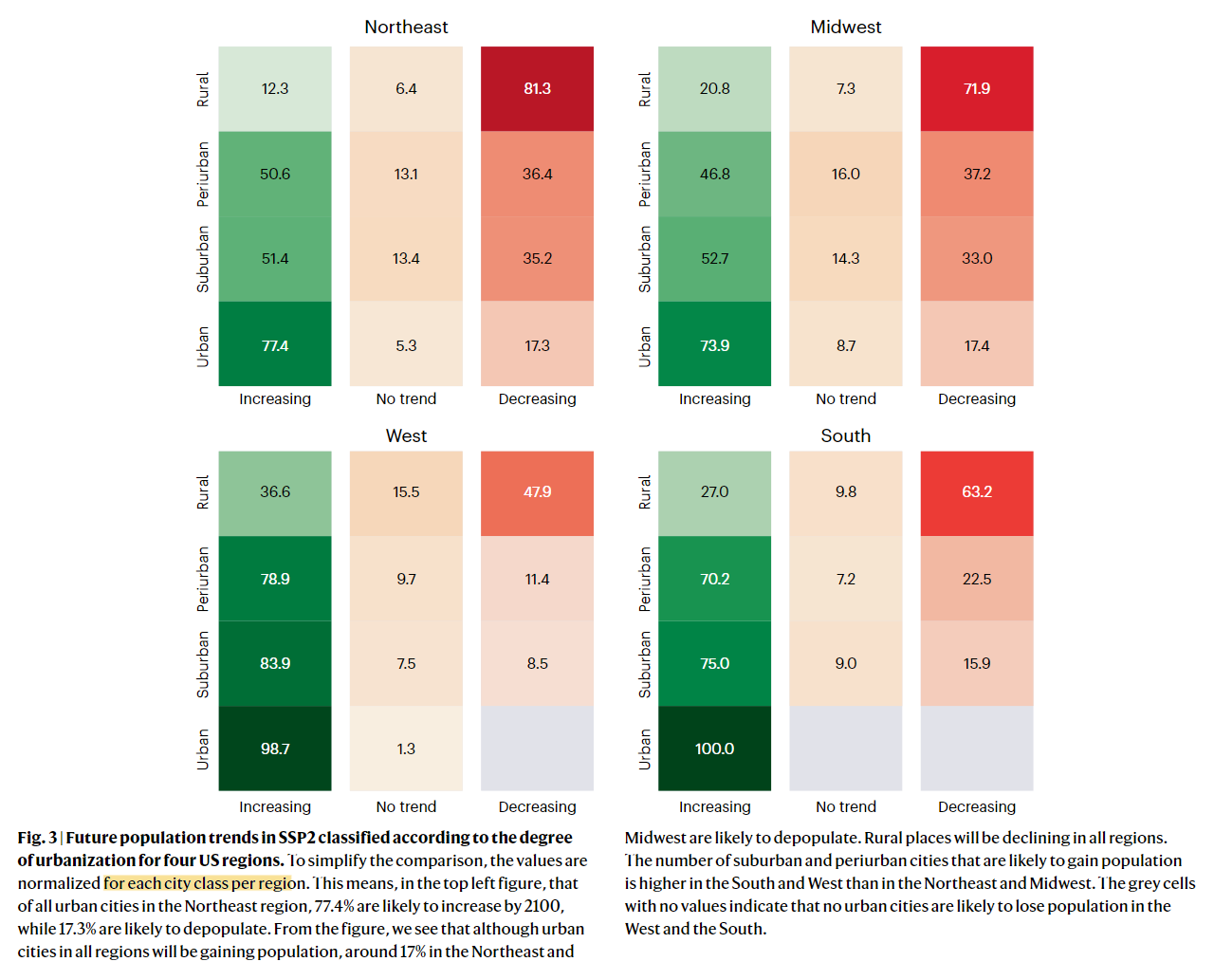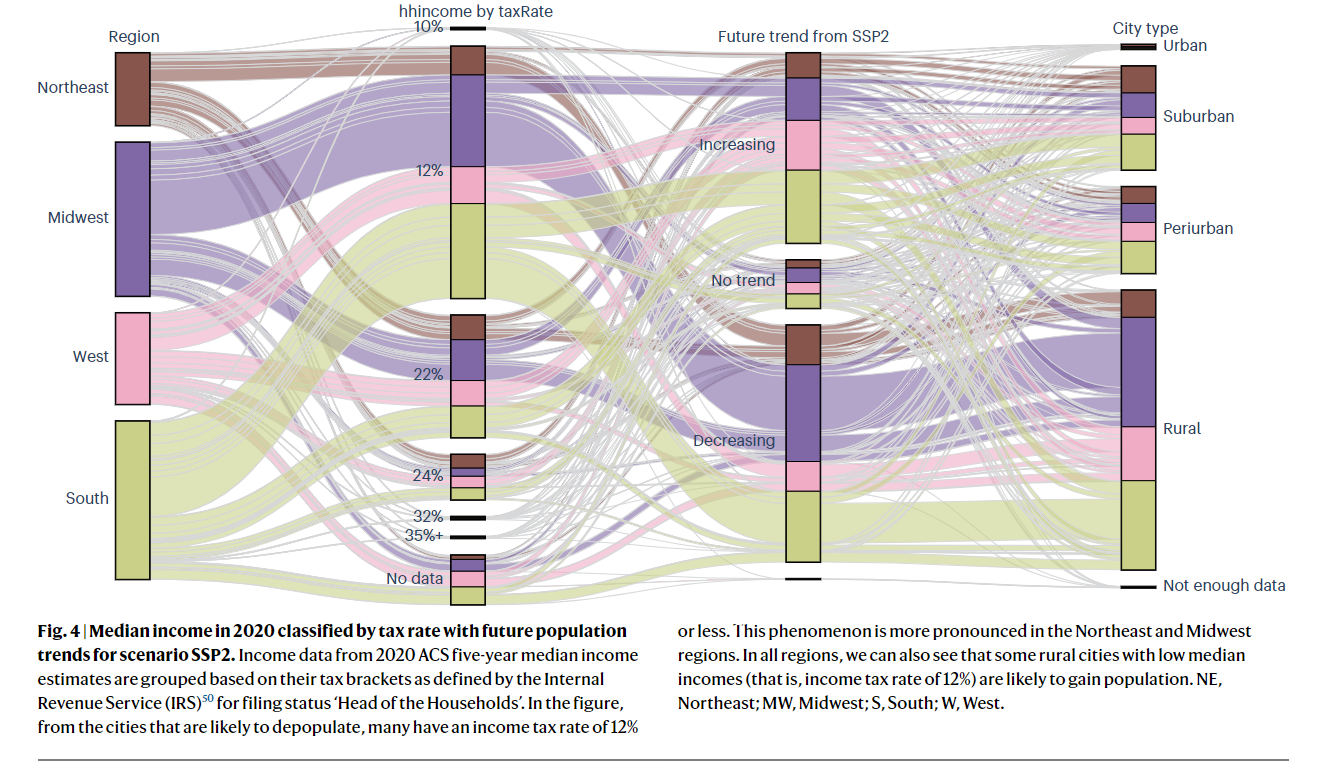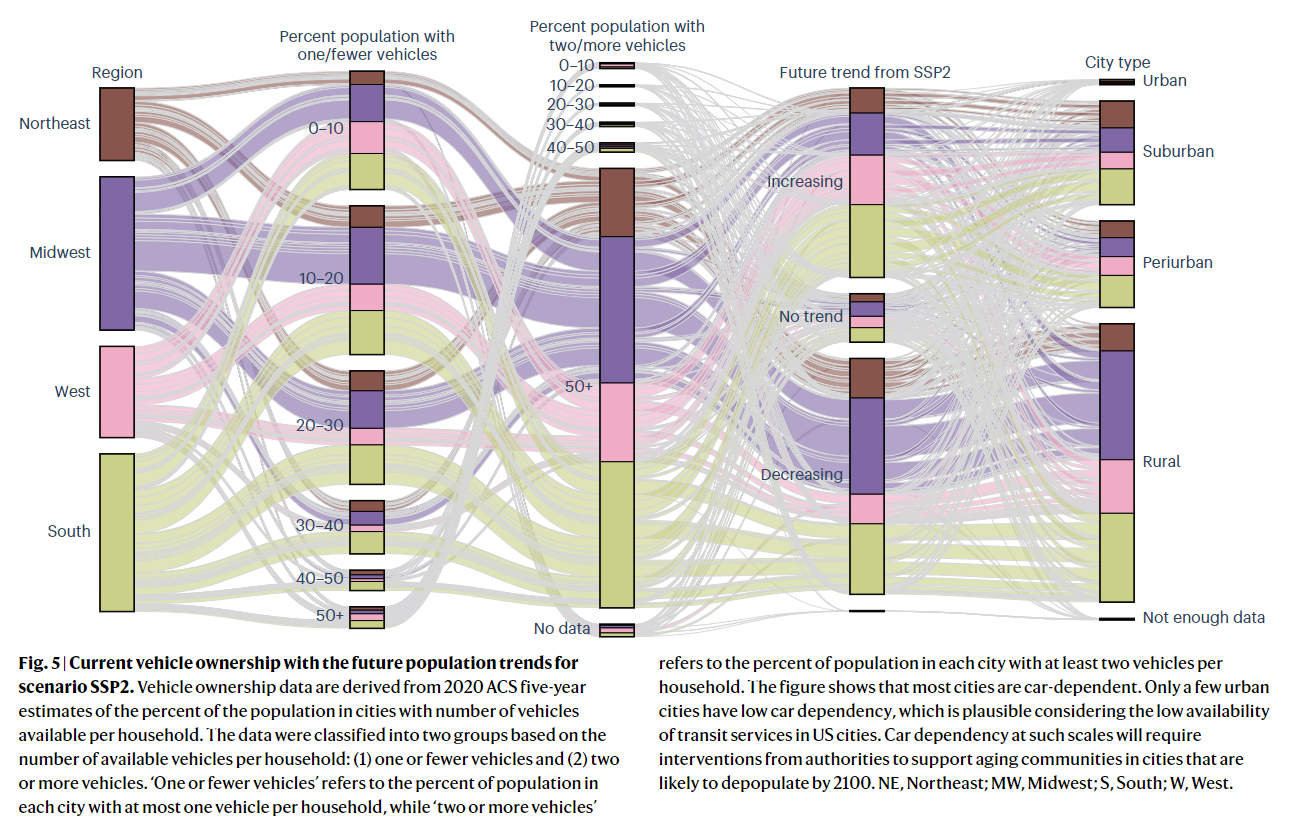Objective:
- What are the future population trends in all US cities up to 2100
- Where are depopulating cities
- What are the characteristics of these cities
Case:
Methodology:
- $growth = 0.1 * \frac{P_{20}-P_{10}}{P_{10}}$
- 5%: severely
- 1-5%: moderately
- 0-1%: slowly
- Distribute population to cities
- area ratio
- population density
- projected population
- Weights: actual and projected
- MK test: whether time-series data have a monotonic increasing trend or not
- Validation
- Mean absolute percent error
- Weighted-(M)APE
Data Source: Open
- US Census
- Population in 2100: Hauer (US), Gao (Global)
Findings:
- Major cities in the Midwest regions are slowly losing population
- Urban cities are likely to increase

- Higher population density are more likely gain population

- Urban cities with lower median household income are more likely to experience depopulation

- Urban cities with low vehicle ownership as well as some suburban and periurban cities with low vehicle owners are likely to experience population growth
- Periurban and rural cities with high vehicle ownership are more likely to gain population

Coding Reference:




